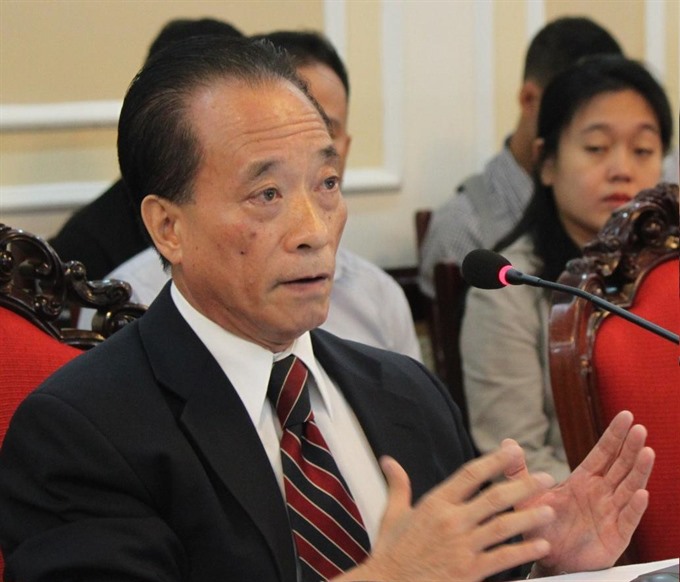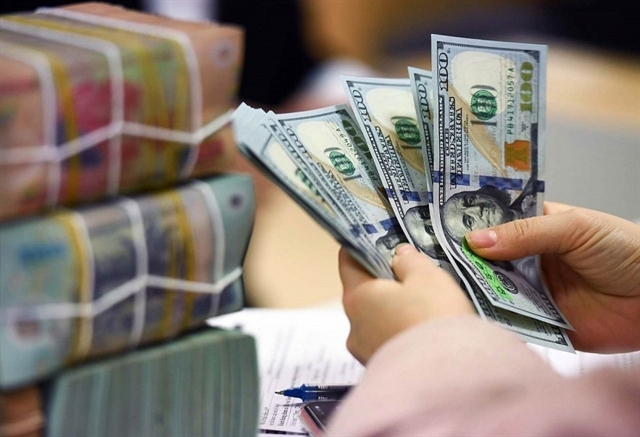 Economy
Economy

Agribank, Vietcombank, Vietinbank, BIDV and VPBank will reduce lending interest rates by 0.5 per cent a year for prioritised economic sectors, such as small and medium domestic businesses. Financial expert Nguyễn Trí Hiếu answered Việt Nam News questions on the matter.
 |
| Nguyễn Trí Hiếu, financial expert |
Agribank, Vietcombank, Vietinbank, BIDV and VPBank will reduce lending interest rates by 0.5 per cent a year for prioritised economic sectors, such as small and medium domestic businesses. Financial expert Nguyễn Trí Hiếu answered Việt Nam News questions on the matter.
I think this prioritised lending-rates reduction is a positive action to encourage development by commercial banks following the Prime Minister’s and the State Bank of Vietnam’s instructions to support enterprises in accessing capital at the most reasonable cost to promote economic growth.
I applaud their effort in helping businesses grow for the year ahead, which is a common determination across the banking sector, starting with the SBV’s 2018 socio-economic development plan. The 0.5 per cent reduction may seem small, but it will have significant impact on small-and-medium-sized enterprises (SMEs) whose chief capital flow comes from commercial banks, so much more than on larger, better established businesses.
I can see a couple of problems with this action, especially during the immediate few weeks before the Tết Holiday. During this time, liquidity is under immense pressure since everybody wants to withdraw their money for New Year expenditure.
Commercial banks strain at this time of year to keep up their cash flows, so to retain relatively lowered lending rates; they must reduce their deposit rates as well. This is because Vietnamese commercial banks’ typical net-interest margins are at a low of 2 per cent and a high of 2.5 per cent, much lower than the US average of 3 per cent. Taking into account bank reserves, operational and other sunk costs and risk insurances, such margins are not enough to keep banks going.
Therefore, I firmly believe that for these banks to lower their lending rates even just by 0.5 per cent, they will need to reduce interest rates first and foremost. There is an entirely different problem for small and medium banks as they will inevitably lose deposits.
In the end, with the best interests of the overall economy in mind, I think it would be best to wait until the holiday is over before banks can safely start amassing deposits at reasonable market rates and giving out other preferential loans for businesses.
What do you propose the SBV should do then?
For 2018, my suggestions are that SBV should pump more money inflow into the banking system to increase liquidity, and reduce governing interest rates such as the re-discount rates, open market operations rates and refinancing rates by about 0.5 per cent a year. Without a significant increase in money supply, an inflation outbreak is foreseeable in the near future.
But most importantly, what they really need to control is the inflation rate. Should the SBV successfully reduce it to between 4 to 3 per cent this year, theoretically speaking, banks can achieve the goal of 2 per cent interest rates and 3 per cent lending rates. By that logic, the key to a lowered lending rates objective is most definitely a lowered inflation rate.
Government bonds yields should be another top priority, since the more the SBV issue, the more likely they will rake in money to make up for budget deficits and to meet investment and regular expenses. It is crucial that such yields be high enough to attract bondholders, especially when this is a zero-risk government security, but low enough to not overshadow commercial banks’ interest rates.
Keep in mind that there must be an overall harmony to these rates to ensure national financial stability. I consider lowering inflation rates to be the key to solving the SBV’s desire for preferential, lowered borrowing rates for businesses, but all the above-mentioned rates should be in line for reduction within the year as well.
However, at present, only large enterprises can issue bonds, while remaining SMEs still have to borrow from banks at high interest rates without enough collateral. The stock market is not a channel for capital mobilisation either, so I hope that in 2018 the Government and the SBV will issue policies to upgrade the stock market for the sake of these small time companies.
Any other advice for the financial sector comes 2018?
In the last four years Việt Nam has come to understand that rhythmic shock does not cause high inflation. I think that in 2018 capital use and management need reviewing and tightening in order to avoid wasting precious domestic banks loans and restrict foreign ones.
In addition, some signs of restructuring and risk management also signalled a good year for the banking industry. I say that there is great support from the credit sector as the biggest source of commercial bank profits at about 18 per cent annual growth rate in 2017. I predict that credit control with reasonable control will lead to increasing consumer lending, contributing significantly to economic growth.
The main challenge is to solve bad debt quickly, clearing stagnant capital flows against liquidity. I think that 2018 will be the year to speed up the restructuring process of credit institutions associated with bad debts in the spirit of the SBV 2016-2020 programme, using the international standard CAMELS credit scoring system.
In the process of accelerating this restructuring, banks will have to change from adherent governance to risk management. I also expect that in 2018, all commercial banks will be listed. Again, nothing is impossible if the SBV, banks and businesses set their collective minds to it. — VNS









